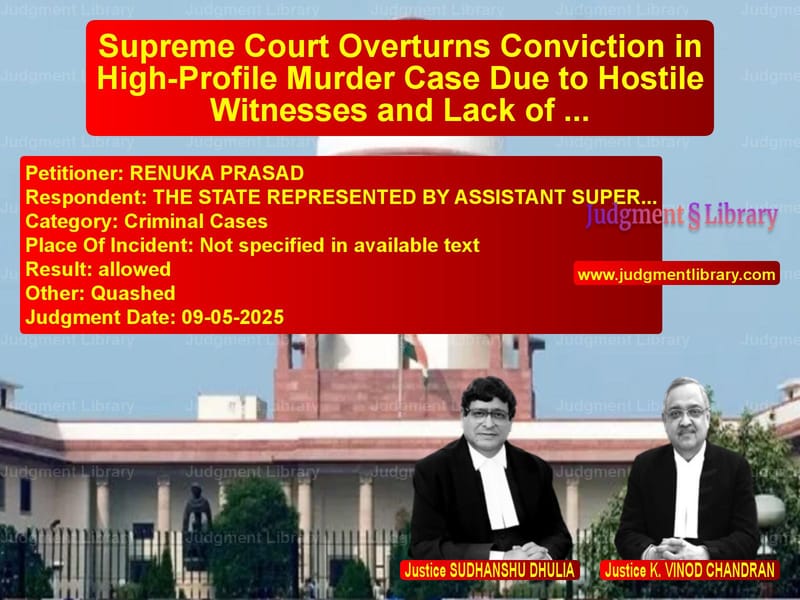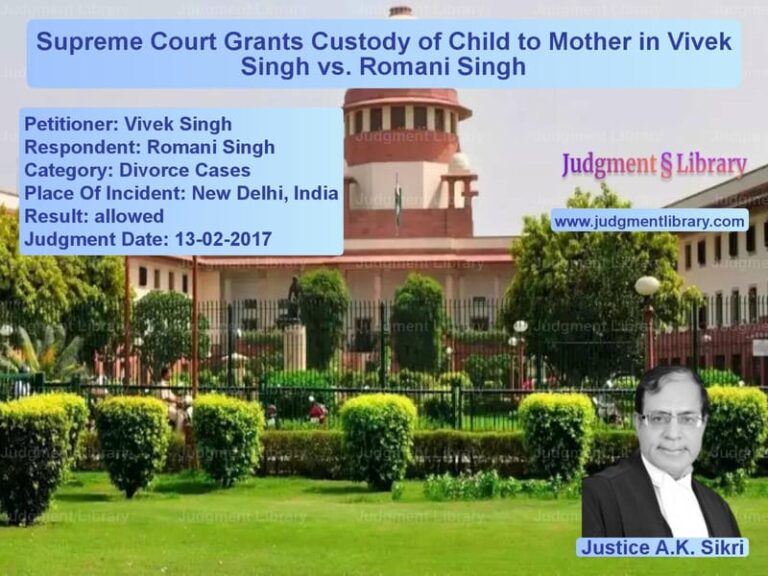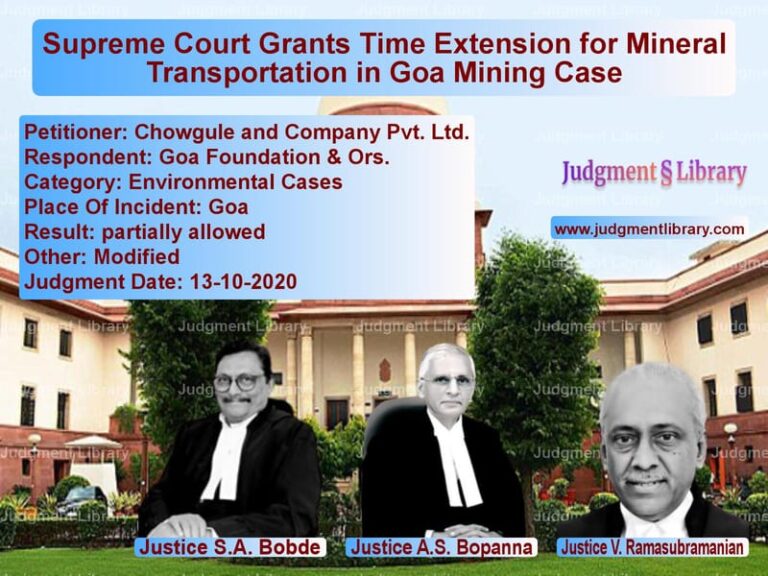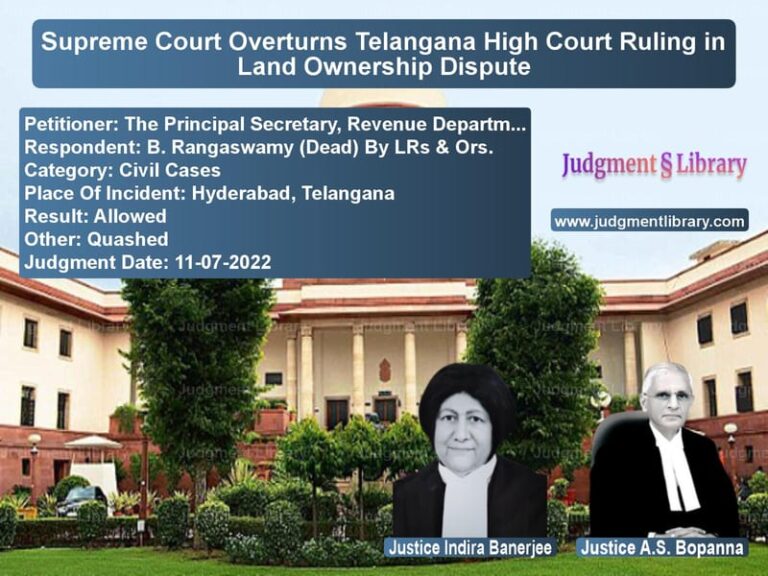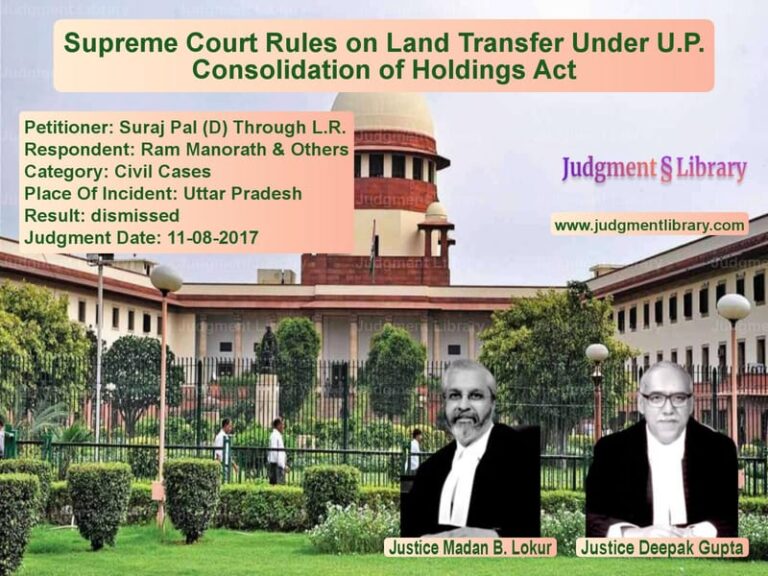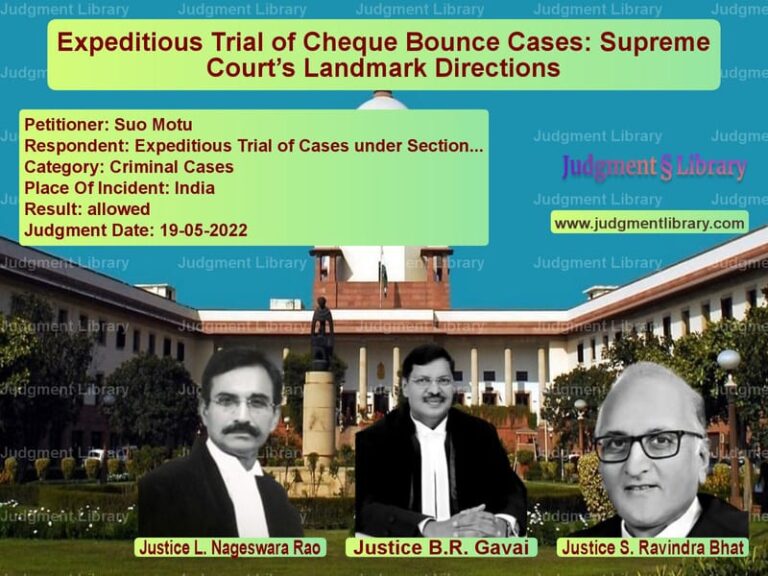Supreme Court Overturns Conviction in High-Profile Murder Case Due to Hostile Witnesses and Lack of Evidence
In a courtroom drama that highlights the challenges of prosecuting criminal cases when witnesses turn hostile, the Supreme Court of India delivered a significant judgment that underscores the fundamental principles of criminal jurisprudence. The case involved the brutal murder of a man in front of his own son, yet resulted in acquittals due to the prosecution’s failure to prove its case beyond reasonable doubt.
The story begins with a family dispute over educational institutions. An entrepreneur father had established several educational institutions, and after his passing, his sons A1 and PW4 found themselves at loggerheads over the division of assets. The deceased, an employee of one institution initially allotted to A1, resigned to join an institution managed by PW4 after the division. According to the prosecution, this alignment with PW4 created enmity with A1, who allegedly conspired with his employees A2 to A4 to engage contract killers A5 and A6 through an advocate A7 to murder the deceased.
The prosecution alleged that on April 28, 2011, at 7:45 PM, A5 and A6 brutally hacked the deceased to death in front of his 15-year-old son, PW8. The victim was rushed to the hospital but succumbed to his injuries at 8:40 PM the same day. PW8 lodged the First Information Statement (FIS), leading to the registration of the crime and subsequent investigation.
The Collapse of the Prosecution Case
What followed was a remarkable collapse of the prosecution’s case at trial. Out of 87 witnesses examined, 71 turned hostile, including crucial eyewitnesses. The young son who witnessed his father’s murder failed to identify the assailants in court. Other witnesses who had initially provided statements about seeing persons fleeing the scene denied their previous accounts during trial.
The Trial Court, faced with this wholesale hostility from witnesses, acquitted all accused persons. The court found no support for the prosecution case from the numerous witnesses arrayed to prove various aspects leading to the murder. However, the Division Bench of the High Court took a different view and reversed the acquittal, convicting A1 to A6 under Section 302 read with Section 120-B of the Indian Penal Code, 1860, while affirming the acquittal of A7.
The Supreme Court’s Analysis
The Supreme Court began its analysis by examining whether the High Court had properly applied the principles governing appeals against acquittal. The Court emphasized the fundamental principle that “the presumption of innocence available to the accused, under the general law, stands fortified and strengthened by reason of the order of acquittal.” When two reasonable views are possible from the evidence, the one favoring the accused must be adopted.
The Court noted with concern that the High Court had heavily relied on the testimony of Investigating Officers who essentially regurgitated the statements recorded under Section 161 of Cr.P.C., which the witnesses themselves had disowned during trial. The Supreme Court strongly criticized this approach, stating: “We cannot but observe that, though reliance is said to be placed on the testimony of the IOs’ this would in fact be a reliance placed on Section 161 statements as spoken of by the IOs which is egregiously wrong.”
The Legal Principles on Hostile Witnesses and Evidence
The Supreme Court elaborated on the legal position regarding statements made to police during investigation. Quoting from previous judgments, the Court emphasized: “a statement under Section 161 Cr.P.C. is not a substantive piece of evidence. In view of the proviso to sub-section (1) of Section 162 Cr.P.C., the statement can be used only for the limited purpose of contradicting the maker thereof in the manner laid down in the said proviso.”
The Court further explained that merely because Investigating Officers spoke about witnesses having made certain statements during investigation doesn’t give those statements credibility unless the witnesses themselves testify to such facts in court. “The only inference possible, on the witnesses turning hostile is that either they have been persuaded for reasons unknown or coerced into resiling from the statements made under Section 161 or that they had not made such statements before police officers.”
The Problematic Recoveries and Confessions
The prosecution had relied heavily on various recoveries, including cash seized from the accused, weapons allegedly used in the crime, and blood-stained clothes. However, the Supreme Court found multiple flaws in how these recoveries were handled and presented as evidence.
Regarding the recovery of weapons and clothes based on the confession statement of A3, the Court observed: “The confession under Section 27, if speaking of the crime itself, that portion is not admissible evidence, since it would offend Sections 25 and 26.” The Court reiterated the principle from Pulukuri Kottaya v. Emperor that “the fact discovered embraces the place from which the object is produced and the knowledge of the accused as to this, and the information given must relate distinctly to this fact. Information as to past user, or the past history, of the object produced is not related to its discovery.”
The Court noted that the clothes allegedly worn by A5 and A6 during the crime were not even verified to see if they would fit the accused. Similarly, the weapons were recovered based on A3’s statement, but there was no independent evidence connecting them to A5 and A6, who were alleged to have actually committed the murder.
The Missing Links in the Prosecution’s Case
The Supreme Court identified multiple missing links in the prosecution’s chain of evidence. The motive of enmity between A1 and the deceased was not established as the relevant witnesses turned hostile. The conspiracy theory collapsed as witnesses denied their previous statements. The alleged preparation for the crime, including purchase of weapons and vehicles, remained unproven as those witnesses also turned hostile.
Most crucially, the eyewitnesses failed to identify the assailants. The Court noted that “the prosecution never attempted to confront PW8 with the clothes recovered as MO12 to MO15, said to have been worn by A5 & A6, at the time when the crime was committed. Neither was it shown to PW9, who at least spoke of having seen one person running away from the scene.”
The Court’s Final Ruling and Observations
In its concluding observations, the Supreme Court expressed understanding for the consternation of the High Court judges faced with a brutal murder where the investigation collapsed at trial. However, the Court emphasized that this cannot justify conviction without legal evidence. “Truth is always a chimera and the illusion surrounding it can only be removed by valid evidence led, either direct or indirect, and in the event of it being circumstantial, providing a chain of circumstances with connecting links leading to the conclusion of the guilt of the accused and only the guilt of the accused, without leaving any reasonable doubt for any hypothesis of innocence.”
The Court poignantly noted: “That is an occupational hazard, every judge should learn to live with, which cannot be a motivation to tread the path of righteousness and convict those accused somehow, even when there is a total absence of legal evidence; to enter into a purely moral conviction, total anathema to criminal jurisprudence.”
With these observations, the Supreme Court allowed the appeals, acquitted all accused persons, and restored the Trial Court’s order of acquittal. The Court directed that the accused be released forthwith if not required in any other case.
This judgment serves as a stark reminder of the challenges in criminal prosecutions when witnesses turn hostile and the imperative for investigations to gather credible, admissible evidence that can withstand judicial scrutiny. While the outcome may be frustrating for those seeking justice for the victim, the Supreme Court’s decision reaffirms the foundational principle that convictions must be based on legal evidence, not moral certainty or frustration over failed prosecutions.
Petitioner Name: RENUKA PRASAD.Respondent Name: THE STATE REPRESENTED BY ASSISTANT SUPERINTENDENT OF POLICE.Judgment By: Justice SUDHANSHU DHULIA, Justice K. VINOD CHANDRAN.Place Of Incident: Not specified in available text.Judgment Date: 09-05-2025.Result: allowed.
Don’t miss out on the full details! Download the complete judgment in PDF format below and gain valuable insights instantly!
Download Judgment: renuka-prasad-vs-the-state-represente-supreme-court-of-india-judgment-dated-09-05-2025.pdf
Directly Download Judgment: Directly download this Judgment
See all petitions in Murder Cases
See all petitions in Bail and Anticipatory Bail
See all petitions in Attempt to Murder Cases
See all petitions in Fraud and Forgery
See all petitions in Custodial Deaths and Police Misconduct
See all petitions in Judgment by Sudhanshu Dhulia
See all petitions in Judgment by K. Vinod Chandran
See all petitions in allowed
See all petitions in Quashed
See all petitions in supreme court of India judgments May 2025
See all petitions in 2025 judgments
See all posts in Criminal Cases Category
See all allowed petitions in Criminal Cases Category
See all Dismissed petitions in Criminal Cases Category
See all partially allowed petitions in Criminal Cases Category

